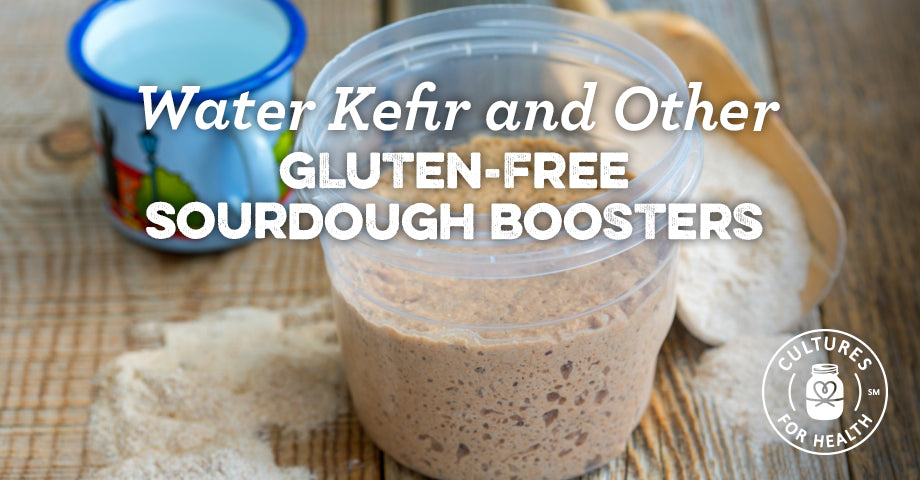
A common practice in gluten-free sourdough baking is using various boosters to help with the leavening and texture of the final bread. This isn’t absolutely necessary as the Gluten-Free Sourdough Starter works as a standalone leavening and fermentation agent. Therefore, these additives are considered optional and are used by those who prefer the assurance these “extras” provide.
WATER & MILK KEFIR AS A GLUTEN-FREE SOURDOUGH BOOSTER
A common booster for gluten-free sourdough baking is water kefir. This fermented beverage is utilized by Sharon Kane in her book the Art of Gluten-Free Sourdough Baking. Ms. Kane and others have found that adding water kefir to the Gluten-Free Sourdough Starter helps the starter maintain its freshness.
Others find that adding water kefir and even milk kefir to the starter or dough gives the bread a boost because of the high yeast content in these fermented beverages. Adding these fermented beverages to the starter or the dough introduces a new host of microorganisms, which may change the flavor or aroma of the starter and bread. While adding water kefir to the starter is common, it is best to introduce milk kefir to just the dough in order to keep the dairy component separate from the culture itself.
COMMERCIAL YEAST AS A GLUTEN-FREE SOURDOUGH BOOSTER
While many prefer the purity of using a sourdough starter as the lone leavening agent, commercial yeast can also be added to the dough for extra leavening. The sourdough starter and yeast work in tandem – the sourdough starter ferments the bread thoroughly and the commercial yeast adds extra leavening during the final rise.
For most recipes, ½ teaspoon of instant yeast can be mixed with just enough water to dissolve it. This should be mixed thoroughly into the dough before shaping it for the final rise.
BAKING SODA & BAKING POWDER AS A GLUTEN-FREE SOURDOUGH BOOSTER
Other common additions to recipes include baking soda and baking powder. Generally speaking, these leavening agents are used in quick breads such as pancakes and muffins where sourdough is utilized more for its fermentation ability than for its leavening properties.
Sandwich and artisan loaves can also include these leavening agents to give the dough an extra boost. Baking soda is particularly helpful in that it works with the acidity of the sourdough starter to create carbon dioxide which adds to the lift of the bread loaf. The alkaline characteristics of baking soda also balance a bit of the tang that sourdough creates through fermentation, though that ubiquitous tang is never completely removed from the dough.
While all of these boosters help give a little insurance to beginner home-bakers, they are not required as the Gluten-Free Sourdough starter provides the needed leaven and fermentation on its own. The Gluten-Free Sourdough recipe collection includes recipes that utilize and do not utilize these boosters, depending on your personal baking preferences.














